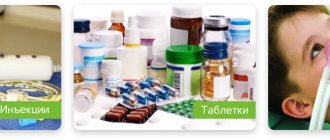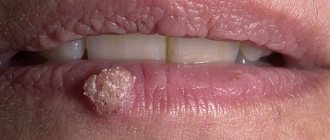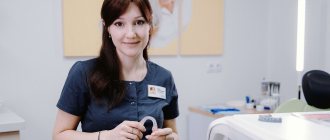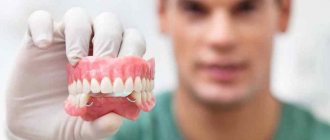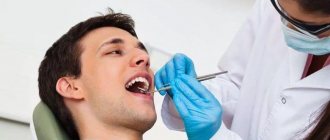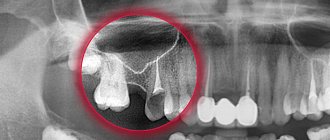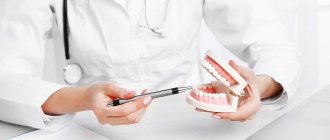Types of pediatric anesthesia How does it work?
Signs of proper sedation Drugs Indications Contraindications Possible complications Alternatives Most people associate going to the dentist with fear and stress. And if we are talking about a child, then the whole family is afraid of the visit. Therefore, the promises of dental clinics about dental treatment under anesthesia for children, without pain, in their sleep, sound like a balm. What is meant by “pain-free treatment” and is it as safe as we are told?
Sedation
– this is inhibition (depression) of the nervous system in order to relax and reduce anxiety. It does not exclude the use of local anesthesia, but simply helps overcome the fear of treatment. This is the main difference between dental treatment under sedation in children and the use of anesthesia.
But the word “sedation” did not catch on among the people, and gradually even dentists began to use expressions like “treatment of children’s teeth under anesthesia” in order to be understood by a wider audience. In this case, what is often meant is not general anesthesia, but rather sedation, a condition in which consciousness is suppressed while all protective reflexes are preserved and the possibility of contact with the patient is preserved.
Types of anesthesia for children during dental treatment
Depression of consciousness can be deep, medium and superficial.
Medicines can be administered in different ways:
- Orally
. This is how we take regular pills. - Intravenously
. Oddly enough, some children are more comfortable with an injection than with a mask on their face. - Inhalation
. This is the most common way of administering drugs. Nitrous oxide is most often used.
How to prepare for the sedation procedure?
It is necessary to strictly adhere to the recommendations given by the doctor, namely:
Before performing drug sedation, it is necessary to do a general blood test, coagulogram, ECG, biochemical blood test, tests for HIV, HCV, HbsAg, Rw. These studies are required for the safety of the patient himself. General preparation for the procedure is usually carried out directly in the dental clinic itself. Patients are advised to refrain from eating and drinking 4 hours before the procedure.
The doctor should be aware of whether the child has respiratory problems, in particular whether he has difficulty breathing through his nose. In the case of such diseases, the sedation procedure loses its effectiveness to some extent. Be sure to tell the dentist what medications your child took on the day of the clinic visit.
How it all happens
Treatment of children's teeth under anesthesia begins with an acquaintance and conversation with the doctor. Sometimes they play cartoons in the office, and some clinics offer toys. Then he is allowed to examine the mask, is asked to try it on, and they begin to supply pure oxygen, to which nitrogen is gradually added, increasing its concentration. After a couple of minutes the child falls asleep. After this, sensors for monitoring his condition are connected to him and treatment begins.
The duration of dental treatment in a dream varies depending on the defect, complexity of the process and other factors. At the end, they are given oxygen again. After the procedure is stopped, the child wakes up gradually. He is under the supervision of doctors for at least an hour in a specially designated room. That day it is better for him to stay at home and not visit the children's group.
When using tablets or intravenous drugs, the algorithm of action is the same, only without a mask and oxygen.
What is sedation, in short?
Sedation is a superficial sleep in which the patient can be awakened at any time. This method is aimed at calming the patient so that the specialist can carry out all the necessary dental procedures. Sedation is an excellent addition to traditional anesthesia and is carried out using special sedatives.
Each physician may have individual sedative preferences. However, throughout the world, the greatest respect has been earned by such a drug as nitrous oxide - oxygen sedation (NAS). It is a mixture of inert gas and oxygen, which has an indistinct sweetish odor. The use of the mixture ensures the most harmless and safe sedation.
The sedation procedure is simple: the patient puts on a mask and inhales ZAC. After which he has a feeling of calm and relaxation. Nitrous oxide is supplied using special equipment. Exhaled gases are immediately collected by high-speed suction.
The resulting state is reminiscent of the sensations that we experience on a summer day after rain, when an increased nitrogen content appears in the air. We experience a feeling of joy, pleasure and pleasant relaxation.
The effect of laughing gas is short-lived. Within just a few minutes it is completely cleared from the lungs. Laughing gas is completely safe - when taken, heart rate and blood pressure remain normal, and there is no addiction to it.
Treatment of children after sedation is quick, effective and, importantly, leaves pleasant memories for the children. The child is in a state of light anesthesia, but at the same time he is conscious and able to communicate normally with the doctor. The use of nitrous oxide greatly facilitates the process of dental treatment for both participants in the process - both the doctor and his little patient. In addition, children develop a positive attitude towards visiting the dentist, and this also makes life easier for their parents.
Children willingly put on bright masks and inhale the sweet aroma. Their use makes the procedure even more enjoyable for the child.
What drugs are used
Nitrous oxide or other drugs are used for inhalation anesthesia. The instructions for use of such drugs list as side effects: respiratory problems, cardiac depression (depending on the dose), nausea, vomiting. But worst of all, with a genetic predisposition, a dangerous disease can develop
[1] – hyperthermia. The chances of this happening are slim, but no one does genetic testing before dental treatment, so the possibility cannot be ruled out.
Other drugs are used intravenously and orally (in tablets), which also have side effects, although not as pronounced.
Anesthesia and sedation: what are the differences?
First of all, anesthesia implies a complete shutdown of consciousness and reflexes. During anesthesia, the patient cannot speak, interact with the doctor, or generally be aware of what is happening. Sedation, on the contrary, leaves the patient conscious (partially) and preserves all reflexes. Of course, anesthesia involves the use of another group of drugs that help achieve a certain state. In a sense, the effect of sedation is also achieved during anesthesia: this is one of its stages when, before falling into deep sleep, the patient experiences calm and tranquility. Anesthesia is considered a radical measure, especially for a fragile child’s body. It is not recommended to put a patient (and especially a child) into a state of anesthesia unless absolutely necessary, since potent drugs are used here, which also affect the functioning of the cardiovascular system.
When is it worth treating children's teeth under general anesthesia in dentistry?
Due to the fact that the terms “sedation” and “anesthesia” are often used interchangeably, it is not always clear which procedure is being referred to.
If you were offered dental treatment for children in a dream, clarify this means sedation or anesthesia.
The main rule is that if you can avoid anesthesia, it is worth doing. Sedation is preferable, although it is also not a panacea. Studies on the long-term effects of general anesthesia show that the use of anesthesia can lead to problems in the development of cognitive functions
[2], especially if it is used repeatedly, which happens when treating children’s teeth in clinics where they take general anesthesia lightly.
There is a risk when using anesthesia
[3]:
- Airway obstructions
. This may be due to anatomical features (adenoids, enlarged tonsils), incorrect position of the jaw or tongue, or accumulation of sputum. Equipment failure can also lead to collapse. - Hemodynamic problems
. Complications include: slow (bradycardia) or, conversely, rapid (tachycardia) pulse, drop in blood pressure, puncture of a vein with a needle.
After such anesthesia, children may experience nausea, vomiting, impaired thermoregulation, muscle tremors, allergic reactions, and inappropriate behavior.
Anesthesia is recommended only in cases of absolute intolerance to local analgesics; in other situations, local anesthesia or, in extreme cases, sedation should be preferred.
Sedation does not have such a radical effect on the body, but the risks remain the same - problems with breathing and circulation.
In the vast majority of cases, complications during the use of anesthesia are caused by a doctor’s error. You need to be absolutely sure of:
- doctor's qualifications and experience;
- equipping the clinic with the necessary equipment to monitor the condition during anesthesia and to provide assistance if something goes wrong.
Although dentists have special training in the administration of sedatives, anesthesia should only be administered by an anesthesiologist.
Benefits of using sedation in children
Therefore, we can say with confidence that the use of sedation has undeniable advantages. Among the advantages of the method are the following:
- The use of ZAX (nitrous oxide - oxygen sedation) makes dental treatment painless;
- The child does not experience psychological discomfort in the doctor’s office: in a state of sedative anesthesia, he does not smell unpleasant odors, does not hear the frightening sound of a drill, and does not distinguish between medical instruments;
- The use of ZAX removes tactile sensitivity, so the baby will not be frightened by vibrations, pressure, compression, etc., made by the doctor;
- The doctor is able to provide full treatment, because his access to the patient is no longer hampered. Now the dentist has enough time to apply the most effective modern treatment methods. He can also use any preparations, even those that harden for a long time;
- The risk of complications after dental treatment is reduced.
The use of sedation has ushered in a new era in pediatric dentistry. After all, doctors now have the opportunity to use modern composite materials for treatment. And they are more durable, hygienic and aesthetically pleasing compared to those previously used. Until recently, composite materials were not used for the reason that their placement requires careful drying of the tooth. The doctor must also wait a long time for the material and fixing glue to harden. Now he has the necessary time reserve.
Contraindications
Today, nitrous oxide is used almost everywhere, and reviews of the procedure are mostly positive. This was largely because the use of this gas does not require a special license, which is required for other types of sedation using psychotropic substances. Because of this, ZAKS is sometimes taken quite lightly. Meanwhile, this procedure has an impressive number of contraindications and restrictions that must be kept in mind to avoid complications and side effects:
- the age of the patients is too young—ZAKS is not recommended for children under three years of age;
- upper respiratory tract diseases (colds, runny nose, rhinitis, sinusitis);
- adenoids;
- otitis in the acute stage;
- traumatic brain injuries (3 months or earlier before the start of treatment);
- seizures and epilepsy;
- lack of possibility of contact with a doctor - when performing ZAKS, the doctor must understand the child’s condition and reaction;
- individual manifestations of the reaction (convulsions, allergies, reverse reactions).
Side effects of ZAX are usually associated with the individual reaction of the child’s body to the components of the mixture. It happens that instead of a relaxed and calm state, we get the opposite reaction: hyperactivity, sudden movements, panic states. In this case, the gas supply should be stopped immediately, as there is a high risk of harming the child and only increasing his fear of dental treatment. If allergic reactions occur (shortness of breath, cough, redness), the doctor should also interrupt the procedure and give the patient antihistamines.
Sedation scheme
The patient puts on a mask, and 100% oxygen first enters his lungs. The oxygen mass is supplied at a speed of 4-6 liters per minute. Nitrogen is gradually mixed with oxygen. Its content is increased to 30%. When the proportions of nitrogen and oxygen are brought to a ratio of 30 to 70, respectively, the moment comes favorable for starting treatment. However, it should be noted that the concentration of nitrous oxide may vary depending on the individual patient. It is important to achieve the desired effect, and it, in turn, can occur with a different ratio of nitrogen and oxygen. Individual indicators are recorded in the patient's record.
The blood is saturated with gas in about 5-7 minutes. Nitrous oxide is completely dissolved in blood serum and is not biotransformed in any way. As soon as the supply of ZAX stops, the process of removing gas from the lungs begins. The gas is removed completely unchanged.
ZAX differs from other sedatives in that the sedative effect occurs very quickly, and the trace effect is completely absent. This is caused by nonspecific depression of the central nervous system.
Sedation manifests itself as follows: a comfortable and relaxed state; good, elevated mood; movements are inhibited; deep breathing; motor activity of the eyes is reduced; sound perception is dull; resistance is reduced.
If you plan to undergo a particularly painful procedure, you can temporarily increase the concentration of nitrous oxide to 50% (acceptable limit is 70%). Nitrous oxide has an analgesic effect, and also enhances the effect of local anesthetics. If the child is suddenly frightened and painful sensations begin to “reach” him, manipulation with nitrous oxide will quickly calm the baby down and treatment can be continued.
Thus, the use of ZAX makes it possible to carry out treatment of any complexity in just one visit.
As for removing the patient from the state of sedation, it occurs smoothly and consists of supplying 100% oxygen for 5-10 minutes. At this time, the doctor communicates with the child, trying to reinforce his positive impressions of visiting the dental office.
In general, the successful use of ZAX is impossible without the competent use of behavior management techniques. Trying on a mask by a child should be done in a playful way so that the child has time to relax before the onset of sedation. The doctor calms the child by telling him about the condition he will soon find himself in. You cannot force a mask on, as this may cast doubt on the success of the procedure.
Methods of drug administration
Dentistry with sedation in Moscow is represented by various methods of administering medications: inhalation, oral and injection.
Inhalation method
Most often used in pediatric dentistry. The procedure uses nitrous oxide. “Laughing gas” evokes positive emotions in a child from visiting a doctor’s office and undergoing lengthy procedures. At the same time, the doctor’s work becomes significantly easier and more effective.
Oral route
Oral drug sedation is a method of calming in which a drug that eliminates agitation is taken an hour before the main treatment procedure begins. Using this sedation technique, an initial level of stress relief is provided, and the main stage, at which an anesthetic is administered intravenously or an oxygen mask is used, is facilitated.
Injection method
Intravenous sedation is recommended primarily during dental treatment in adults. The injection method involves administering drugs intravenously, directly into the hematopoietic bed. This method is good because it allows you to control the degree of both physical and emotional relaxation.
Indications for the use of pain relief
European and American dentists use sedation in dentistry when performing any manipulations. In Russia, such a procedure can not be performed in every clinic. Treatment and removal of teeth under sedation at Refformat dentistry allows patients to completely calm down and undergo all manipulations in complete relaxation.
Indications for use:
- Severe fear, fear of visiting the dentist, panic.
- Increased vomiting.
- The desire to receive a service with high comfort.
- Reduced pain threshold.
- The need for a long period of simultaneous treatment.
- Vascular or cardiac pathologies (additional consultation with a therapist is required).
- A symptom of cramped (enclosed) spaces.
- A sharp increase in blood pressure due to stress.
Our prices
When using nitrous oxide in dentistry
For children, the price of the procedure increases slightly. This is explained by the fact that expensive equipment is used, plus another doctor is involved in the operation to monitor the patient’s condition. But sedation can save the child from suffering, so it’s better not to skimp on it.
Prices
Use of nitrous oxide sedation
85 rub./minute
At the children's dental clinic " Natadent"
» you can receive high-quality treatment using modern methods of sedation and anesthesia without overpayments. Despite the use of expensive advanced equipment, we strive to keep prices at an affordable level.
Advantages of SM-Dentistry
- Qualified pediatric dentists Specialists have extensive experience working with children and are well versed in child psychology. They know how to conduct treatment in a playful way. Our little patients love visiting dentists, are happy to come for preventive examinations and understand their importance.
- Comprehensive services The center’s dentists monitor the condition of the jaw apparatus of small patients from the moment the first tooth appears. They take into account all the anatomical features of the child and select the optimal treatment option. Doctors teach the child and parents how to properly perform oral hygiene.
- High-quality materials We use exclusively certified materials and medicines from world-famous manufacturers. We use only anesthetics that are safe for children. The clinic is equipped with the most modern equipment for the diagnosis and treatment of dental diseases.
You can find out more details and sign up for a consultation with a specialist by calling: +7
, or by filling out the form:
Why is it so important not to scare a child?
The most difficult thing in dentistry is not to scare a child.
Unfortunately, this is often done for us by some strange grandparents who scare the child with doctors. Please never tell your children things like: “If you eat candy, you will ruin your teeth. And then the doctor will use a terrible drill to drill your teeth.” Sooner or later, a small patient will have to encounter a dentist. And we would like him to trust us, and not run away screaming at the sight of a white coat. Otherwise, everything can end with persistent dental phobia, a mouth full of dentures and a bunch of problems for life. PS
In previous posts about palatal expanders and the scientific approach to dentistry, you asked about the clinic. If you want to treat your teeth with us, then say “I’m from Habr”, there will be a small 5% discount.
